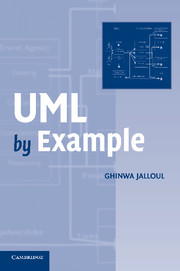7 - Distribution Case: Case Study 5
Published online by Cambridge University Press: 05 June 2012
Summary
This application focuses on automating the operations of a goods distribution company. The summary of user requirements is appended with all data that may be needed by such applications. Almost all details required by the application are collected from the beginning. The detailed requirements give a useful sample that can be adopted in building similar applications. The activity diagrams depict conditionals and repetitions. Also, the detailed object model is rich with attribute names and associations. The exercises at the end of the chapter lead the user in carrying traceability and other activities that were dropped from this case study.
INCEPTION
USER REQUIREMENTS
Description 7-1 gives a brief description of the application.
More on User Requirements
The following are detailed requirements of the application. Most of these will be more useful during the design stage and serve to shape the object model.
DVC is a software solution for a given company. This company is a reseller of goods. It obtains its products from a vendor, and resells them to a customer. The basic need of the company is a database to store specific informationconcerning the various vendors, customers, and warehouse,s as well as a product database. In order to make the lives of the employees easier, the software features an easy-to-use interface for the database, which includes interactive forms and graphics. Using the information in the database, the user can access the information in several easy ways, such as browsing and searching.
- Type
- Chapter
- Information
- UML by Example , pp. 208 - 234Publisher: Cambridge University PressPrint publication year: 2004



